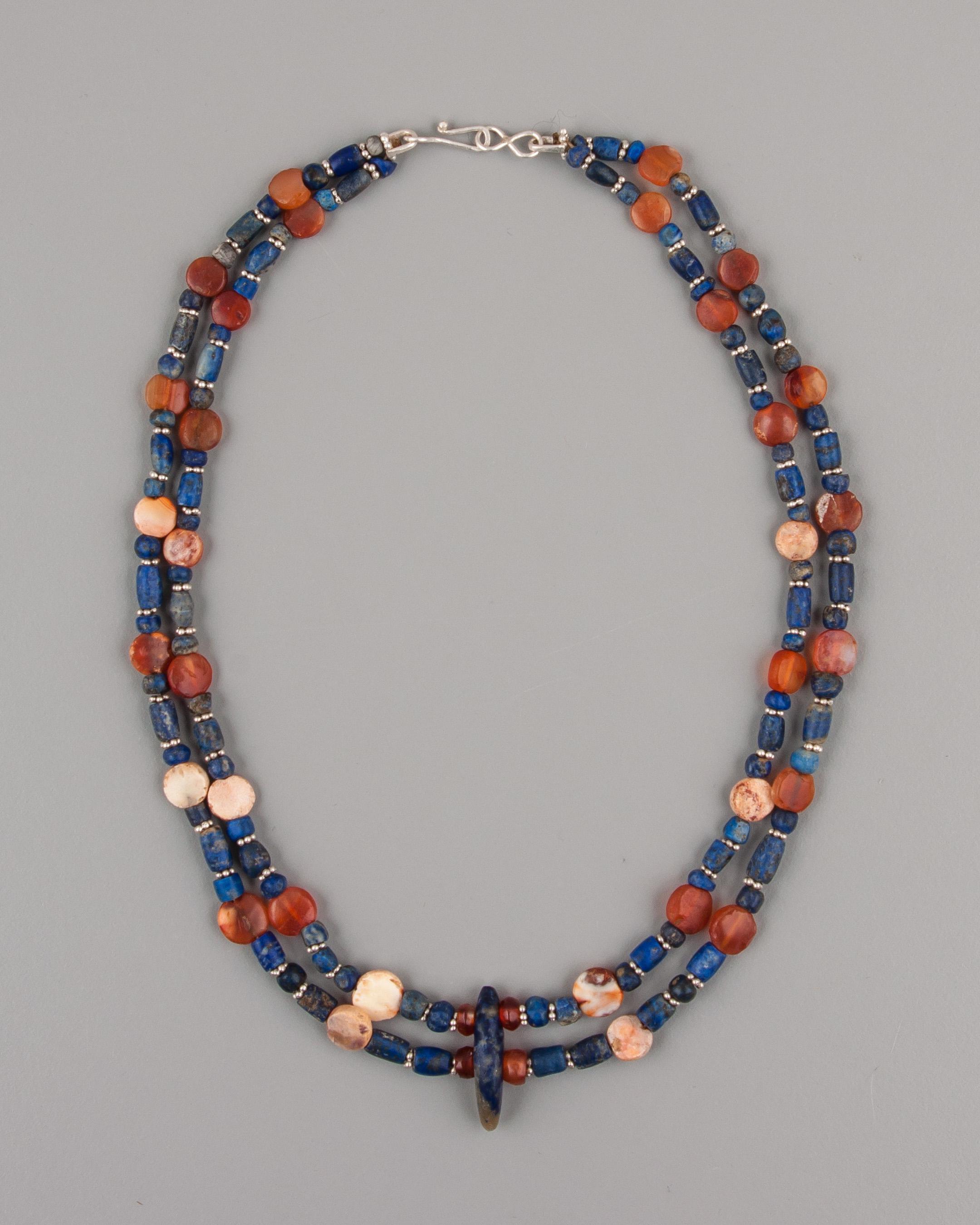Ancient Double Stranded Necklace of Lapis Lazuli, Carnelian, and Silver with Double Drilled Center Bead
Collection:
Swat Valley
Material:
Lapis Lazuli, Carnelian, Silver
Size:
The necklace is 17 ½ inches (45 cm) in length. The necklace weighs 43 gm.
Price:
$2,100.00
A double strand necklace of lapis lazuli beads with tabular carnelian beads and a double drilled lapis lazuli pendant bead in the center. There are seventy-two silver five-ball granulated ring spacer beads, one hundred four lapis lazuli beads and thirty-two tabular carnelian beads. The lapis beads are arranged in groups of three, which are separated by the tabular carnelian beads. The three lapis beads are separated by five-ball granulated silver beads. The center lapis pendant bead is 2.7 cm in height, 9 mm in thickness and 5.5 mm in width. The perforations are 2.5 mm in diameter. The two pairs of carnelian beads that face the pendant are each 3.7 mm – 3.9 mm in length, 6.8 mm in width and have perforations of 2.5 mm in diameter. The lapis beads are of two shapes: in each group of three, the center bead is longer and the two outer beads are about one half the length. The sizes of these beads graduate towards the back of the necklace. At the center the lapis beads are 5 mm in width. At the back they are 3.5 mm in width. The longer beads are 7.5 mm in length and the short are 4 mm. These reduce to 6 mm in length and 3 mm in length at the back. The diameters of the drill holes are 2mm. The tabular carnelian beads are 1 cm in diameter at the front of the necklaced and 7.5 mm in diameter at the back. They are 3.5 mm – 4.0 mm in thickness. The diameters of the drill holes are 2 mm. The whitening of some of the carnelian tabular beads is the result of chemical interaction with alkaline soil; the consequence of being buried for centuries in the ground. The beads are from the Swat Valley of what is now northern Pakistan. Two thousand years ago, when these beads were made and being worn, it was a Buddhist kingdom known as Uddiyana (“The Garden”).
